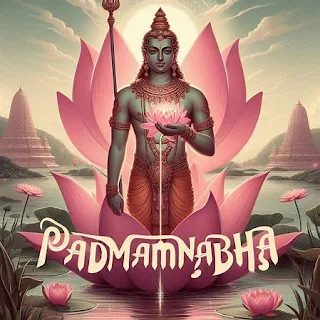SAWAN 2024 SHIVRATRI: DATE, TIME, MUHURAT, AND STORY
INTRODUCTION
 "Sawan Shivratri 2024 Celebration"
"Sawan Shivratri 2024 Celebration"
SAWAN SHIVRATRI, ALSO REFERRED TO AS SHRAVAN SHIVRATRI, HOLDS A SIGNIFICANT PLACE IN HINDU TRADITIONS. DEDICATED TO LORD SHIVA, THIS FESTIVAL IS CELEBRATED IN THE AUSPICIOUS MONTH OF SAWAN (SHRAVAN). IT IS BELIEVED TO BE THE DAY WHEN LORD SHIVA AND GODDESS PARVATI WERE UNITED IN HOLY MATRIMONY. DEVOTEES ACROSS INDIA AND OTHER PARTS OF THE WORLD OBSERVE THIS FESTIVAL BY FASTING AND ENGAGING IN VARIOUS RELIGIOUS ACTIVITIES TO HONOR LORD SHIVA. THIS ARTICLE PROVIDES A COMPREHENSIVE GUIDE ON THE DATE, TIME, MUHURAT, RITUALS, AND THE LEGENDARY STORIES ASSOCIATED WITH SAWAN SHIVRATRI IN 2024.
SAWAN SHIVRATRI 2024: DATE AND TIME

SAWAN SHIVRATRI IS OBSERVED ON THE CHATURDASHI TITHI DURING THE KRISHNA PAKSHA (WANING PHASE OF THE MOON) IN THE MONTH OF SHRAVAN. IN 2024, THE KEY DETAILS FOR SAWAN SHIVRATRI ARE:
DATE: SATURDAY, AUGUST 3, 2024
NISHITA KAAL PUJA TIME: 11:57 PM TO 12:45 AM, AUGUST 4, 2024
DURATION: 48 MINUTES
CHATURDASHI TITHI BEGINS: 09:10 PM ON AUGUST 3, 2024
CHATURDASHI TITHI ENDS: 08:29 PM ON AUGUST 4, 2024
SIGNIFICANCE OF SAWAN SHIVRATRI

SAWAN SHIVRATRI IS A FESTIVAL THAT UNDERSCORES THE SPIRITUAL AND RELIGIOUS DEVOTION OF SHIVA'S FOLLOWERS. CELEBRATED AS THE DAY WHEN LORD SHIVA MARRIED GODDESS PARVATI, THIS EVENT IS A HIGHLIGHT OF THE HOLY MONTH OF SAWAN. OBSERVING THIS FESTIVAL IS BELIEVED TO BRING PROSPERITY, HAPPINESS, AND SPIRITUAL ENLIGHTENMENT.
RITUALS AND OBSERVANCES
FASTING (VRAT):

DEVOTEES UNDERTAKE A RIGOROUS FAST ON SAWAN SHIVRATRI. SOME FOLLOW A NIRJALA FAST, ABSTAINING FROM BOTH FOOD AND WATER, WHILE OTHERS MAY CONSUME FRUITS AND MILK. THE FAST IS BROKEN THE NEXT MORNING AFTER COMPLETING THE PUJA AND OFFERING PRAYERS TO LORD SHIVA.
PUJA (WORSHIP):
SPECIAL PUJAS ARE CONDUCTED IN SHIVA TEMPLES AND HOMES. DEVOTEES OFFER BILVA LEAVES, FLOWERS, FRUITS, MILK, HONEY, AND SACRED ASH (VIBHUTI) TO THE SHIVA LINGAM. THE CHANTING OF MANTRAS LIKE 'OM NAMAH SHIVAYA' CREATES A SACRED AMBIANCE.
NISHITA KAAL PUJA:
THE MIDNIGHT PUJA, OR NISHITA KAAL, IS THE MOST CRUCIAL RITUAL OF SHIVRATRI. DEVOTEES STAY AWAKE THROUGHOUT THE NIGHT, ENGAGING IN BHAJANS, KIRTANS, AND OTHER DEVOTIONAL ACTIVITIES, BELIEVING THAT STAYING AWAKE AND CHANTING LORD SHIVA'S NAME BRINGS DIVINE BLESSINGS.
RUDRA ABHISHEKAM:
ONE OF THE MOST SIGNIFICANT RITUALS IS RUDRA ABHISHEKAM, WHERE THE SHIVA LINGAM IS ANOINTED WITH VARIOUS SACRED SUBSTANCES LIKE WATER, MILK, HONEY, CURD, GHEE, AND SUGARCANE JUICE. THIS RITUAL IS PERFORMED WHILE CHANTING VEDIC MANTRAS AND IS BELIEVED TO PURIFY BOTH MIND AND SOUL.
OFFERING OF BILVA LEAVES:
BILVA (BEL) LEAVES HOLD SPECIAL IMPORTANCE IN THE WORSHIP OF LORD SHIVA. DEVOTEES OFFER THESE LEAVES TO THE SHIVA LINGAM, BELIEVING THAT SINCERE OFFERINGS CAN FULFILL THEIR WISHES.
DECORATING THE SHIVA LINGAM:
DEVOTEES DECORATE THE SHIVA LINGAM WITH FLOWERS, GARLANDS, AND VARIOUS OTHER DECORATIVE ITEMS. OIL LAMPS AND INCENSE STICKS ARE LIT AROUND THE LINGAM, CREATING A PEACEFUL AND HOLY ATMOSPHERE.
THE LEGEND OF SAWAN SHIVRATRI

SAWAN SHIVRATRI'S ORIGINS ARE STEEPED IN ANCIENT HINDU MYTHOLOGY, WITH SEVERAL LEGENDS EXPLAINING ITS SIGNIFICANCE. TWO OF THE MOST WELL-KNOWN LEGENDS ARE:
THE DIVINE MARRIAGE OF SHIVA AND PARVATI:
THIS LEGEND NARRATES HOW SAWAN SHIVRATRI MARKS THE DIVINE UNION OF LORD SHIVA AND GODDESS PARVATI. AFTER INTENSE PENANCE AND PRAYERS BY GODDESS PARVATI TO WIN LORD SHIVA'S LOVE, THEY WERE UNITED IN MARRIAGE ON THIS DAY. THIS STORY HIGHLIGHTS THE VIRTUES OF DEVOTION, PERSEVERANCE, AND THE POWER OF DIVINE LOVE.
THE SAMUDRA MANTHAN (CHURNING OF THE OCEAN):
ANOTHER PROMINENT LEGEND ASSOCIATED WITH SAWAN SHIVRATRI IS THE SAMUDRA MANTHAN. DURING THE CHURNING OF THE OCEAN BY GODS AND DEMONS TO OBTAIN AMRIT (NECTAR OF IMMORTALITY), A DEADLY POISON (HALAHALA) EMERGED. TO PROTECT THE WORLD FROM ITS EFFECTS, LORD SHIVA CONSUMED THE POISON AND HELD IT IN HIS THROAT, WHICH TURNED BLUE. THIS SELFLESS ACT EARNED HIM THE NAME NEELKANTH (THE ONE WITH A BLUE THROAT). SAWAN SHIVRATRI COMMEMORATES THIS ACT OF SACRIFICE, SYMBOLIZING THE TRIUMPH OF GOOD OVER EVIL AND DIVINE PROTECTION.
BENEFITS OF OBSERVING SAWAN SHIVRATRI
OBSERVING SAWAN SHIVRATRI OFFERS SEVERAL SPIRITUAL AND PERSONAL BENEFITS:
SPIRITUAL GROWTH:
FASTING AND PERFORMING RITUALS ON SAWAN SHIVRATRI ENHANCE SPIRITUAL GROWTH AND INNER PEACE. IT IS A DAY DEDICATED TO MEDITATION, SELF-REFLECTION, AND CONNECTING WITH THE DIVINE.
DIVINE BLESSINGS:
DEVOTEES SEEK LORD SHIVA'S BLESSINGS FOR PROSPERITY, HEALTH, AND HAPPINESS. WORSHIP ON THIS DAY IS BELIEVED TO CLEANSE THE SOUL AND BRING DIVINE GRACE.
REMOVAL OF SINS:
OBSERVING SAWAN SHIVRATRI WITH DEVOTION IS SAID TO ABSOLVE PAST SINS AND LEAD TO A RIGHTEOUS LIFE. THE RITUALS PURIFY THE MIND AND BODY, FOSTERING SPIRITUAL UPLIFTMENT.
FULFILLMENT OF WISHES:
DEVOTEES WHO SINCERELY OBSERVE THE FAST AND PERFORM PUJA BELIEVE THAT THEIR DESIRES AND ASPIRATIONS WILL BE FULFILLED BY LORD SHIVA. MANY SHARE STORIES OF MIRACULOUS BLESSINGS RECEIVED AFTER OBSERVING SAWAN SHIVRATRI.
STRENGTHENING MARITAL BONDS:
MARRIED COUPLES SEE SAWAN SHIVRATRI AS AN OPPORTUNITY TO SEEK BLESSINGS FOR A HARMONIOUS AND BLISSFUL MARRIAGE. WORSHIPPING LORD SHIVA AND GODDESS PARVATI TOGETHER IS BELIEVED TO STRENGTHEN MARITAL BONDS AND BRING HAPPINESS TO THE FAMILY.
HOW TO OBSERVE SAWAN SHIVRATRI
PREPARATION:
START THE DAY WITH A BATH, PREFERABLY USING HOLY WATER IF AVAILABLE. WEAR CLEAN, PREFERABLY WHITE OR LIGHT-COLORED CLOTHES, SYMBOLIZING PURITY.
HOME DECORATION:
DECORATE THE PUJA AREA OR TEMPLE AT HOME WITH FLOWERS, RANGOLI, AND OIL LAMPS TO CREATE A SERENE AND SPIRITUAL ENVIRONMENT.
PUJA SAMAGRI:
GATHER ALL NECESSARY ITEMS FOR THE PUJA, INCLUDING BILVA LEAVES, FLOWERS, FRUITS, MILK, HONEY, GHEE, CURD, WATER, INCENSE STICKS, OIL LAMPS, AND SACRED ASH (VIBHUTI).
FASTING:
OBSERVE A STRICT FAST, ABSTAINING FROM FOOD AND SOMETIMES EVEN WATER. IF UNABLE TO FOLLOW A NIRJALA FAST, CONSUME FRUITS, MILK, AND OTHER SATTVIC (PURE) FOOD ITEMS.
PUJA RITUALS:
PERFORM THE PUJA WITH DEVOTION, CHANTING MANTRAS AND OFFERING COLLECTED ITEMS TO THE SHIVA LINGAM. PAY SPECIAL ATTENTION TO THE NISHITA KAAL PUJA DURING MIDNIGHT.
STAY AWAKE:
PARTICIPATE IN JAAGRAN (NIGHT VIGIL) BY STAYING AWAKE ALL NIGHT, SINGING BHAJANS, AND CHANTING LORD SHIVA'S NAMES. ENGAGE IN SPIRITUAL ACTIVITIES AND AVOID DISTRACTIONS.
RUDRA ABHISHEKAM:
IF POSSIBLE, PERFORM THE RUDRA ABHISHEKAM RITUAL, BATHING THE SHIVA LINGAM WITH SACRED ITEMS WHILE CHANTING VEDIC MANTRAS.
CONCLUSION OF FAST:
CONCLUDE THE FAST THE NEXT MORNING AFTER PERFORMING THE FINAL PUJA AND OFFERING PRAYERS TO LORD SHIVA. BREAK THE FAST WITH A SIMPLE, SATTVIC MEAL.
CONCLUSION
SAWAN SHIVRATRI IS A DEEPLY SPIRITUAL AND SIGNIFICANT FESTIVAL, BRINGING DEVOTEES CLOSER TO LORD SHIVA. BY FASTING, PERFORMING RITUALS, AND ENGAGING IN DEVOTION, DEVOTEES SEEK THE DIVINE BLESSINGS OF LORD SHIVA FOR PROSPERITY, HEALTH, AND HAPPINESS. THE LEGENDS ASSOCIATED WITH THIS FESTIVAL REMIND US OF THE POWER OF DEVOTION, THE VICTORY OF GOOD OVER EVIL, AND DIVINE PROTECTION. MAY SAWAN SHIVRATRI 2024 BRING PEACE, PROSPERITY, AND SPIRITUAL GROWTH TO ALL WHO CELEBRATE IT.







































.jpeg)
.jpeg)
.jpeg)



